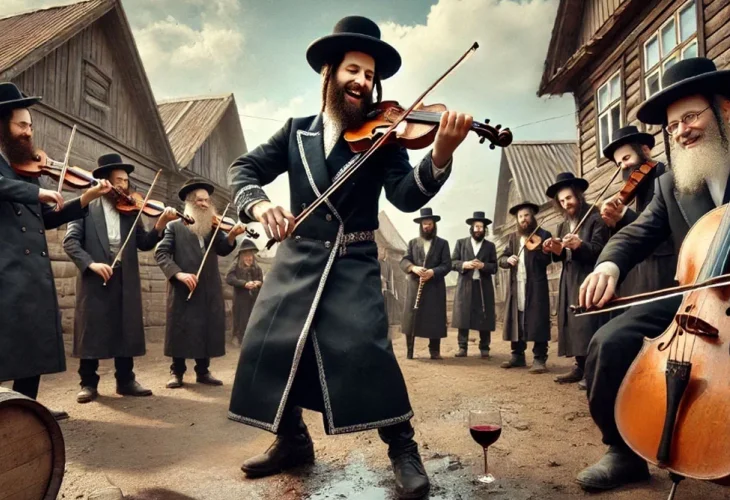Meet Hershele: The Jewish Jester Who Was Truly a Legend
Hershele was not just a jokester; his wit and charm allowed him to jest even with the noble landlords of his time without repercussion.

Who among us hasn't heard a joke or two about 'Hershele'? Hershele the jester, the clown, the prankster. While other cultures have their own jokesters, like Juha among the Arabs or Till Eulenspiegel in Germany, the Jews embraced Hershele.
But with one difference: Hershele from Ostropol was indeed a real person.
The founder of the Hasidic movement, Rabbi Israel Ba'al Shem Tov, had a daughter named Aidel, who had a son named Baruch. Rabbi Baruch of Medzhybizh, the town of the Ba'al Shem Tov himself, grew to become a great leader, attracting followers from the entire region. His court was grand, bustling with Hasidim discussing Torah, sharing meals, and celebrating holidays and Shabbat together.
However, Rabbi Baruch struggled with sadness, often seen in deep sorrow, weighed down by the burdens of exile and the troubles they brought. Hasidism emphasizes joy, a state Rabbi Baruch sometimes found elusive amid his grief.
In the nearby town of Ostropol, lived a sharp-witted Jewish Hasid named Tzvi Hirsch, affectionately known as Hershele. Visiting Rabbi Baruch's court, Hershele lifted his spirits once by wandering with a lit candle around him, claiming to search for the rabbi's fallen face. Rabbi Baruch laughed, his sadness lifted, and he began to speak joyous words of Torah.
Though Hershele's words were humorous, he wasn't shy about critiquing, delicately addressing Rabbi Baruch in ways other followers wouldn't dare. His cheeky comments helped inspire change for Rabbi Baruch and his followers alike, all taken in good humor.
Hershele's boldness extended even to the powerful local landlords, who, charmed by him, overlooked his jibes instead of punishing him.
A local from Ostropol recalls a unique tradition: "The day after the wedding, relatives would, with an orchestra, visit a marked shop to dance and drink l'chaim. They'd spill schnapps, standing where Hershele's home once was, until he was called to Rabbi Baruch's court. After his passing, the rabbi missed him, and once visiting Ostropol, he requested to see Hershele's childhood home. Finding ruins, he lamented, 'Hershele! Your house is in shambles, and surely your throat is parched in the grave, longing for a drop of schnapps.' He blessed a cup, sipped, and poured the rest on the threshold. The Hasidim joined, dancing, and thus began the custom of visiting Hershele's home on joyous days.".
For years, Jews shared Hershele's jokes and lessons, portraying him as a learned Hasid—a scholar who used both humor and wisdom, not the reckless jester he later became in folklore.
Modern literature sought a fool 'of our own.' Alongside tales of foolishly depicted Chelm sages, humorous stories cast Hershele as a mischievous rogue, influencing stage plays and children's illustrated books, presenting him differently than he was.
Enlightenment writers depicted him variously, forming a folk legend around Hershele rather than a truthful account. In 2008, the National Company for Medals and Coins released a medal commemorating Hershele, depicting him as a disheveled youth herding a cow.
What remains clear is the high regard Hasidim of his generation held for him. Evidence lies in his burial near the Ba'al Shem Tov, confirmed by 19th-century texts. Recently, his gravestone was set up nearby, although local authorities removed it due to uncertain identification. Nonetheless, his proximity to the sacred Ba'al Shem Tov's burial signifies his esteemed status, not that of a mere exuberant prankster.

